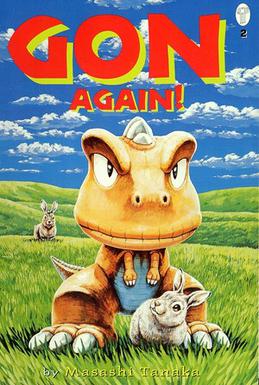July 17, 2015
When I Was a Kid…
I have, admittedly, been trying to turn my kids into nerds since slightly before they were born. Comics and graphic novels have been part of our bedtime routine since before they were age-appropriate, and there was a mushy time a year or so ago where it looked like my intentions had backfired and the elder child was having nightmares about Bone‘s rat creatures. (I am not the world’s best mom – maybe only second or third best.)
But this year, all of those sewn seeds have taken root and flowered in a most spectacular way. It helps that the comic market for the under-ten set has exploded. It also helps that some of the best and brightest comic creators in the world are trying their hands at children’s picture books with wonderful results. Even mega-best-selling and award-winning children’s book franchises like Mo Willem’s Piggie and Gerald books are essentially gateways into comics. You’d have to be childless under a rock not to be swept into – well, not just comics, but excellent comics.
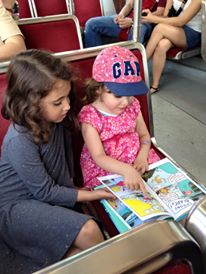
M&O love, LOVE James Kochalka’s Dragon Puncher books.
I brought my two daughters – now 7 and 4 – to the Toronto Comics Arts Festival this year, where for the first time they led the way. They spent every penny of their own hard-earned money on books, sketches, bookmarks and buttons. We still have books on the shelf we haven’t tried yet, distracted, as they are, by their favourites.
I’ve learned a lot. #1 thing is that what I like and what they like are two very different things. This sometimes leads to fights at storytime, power struggles over whether we’re going to read Moomintrolls or whether I have to drag myself through Power Ponies again. Nevertheless we agree on a number of gems, a lot of them new, so I’ve assembled a little roundup below.
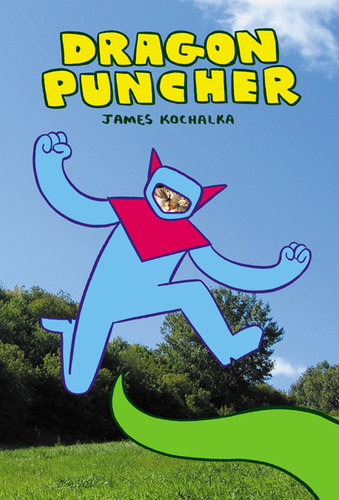 Dragon Puncher by James Kochalka
Dragon Puncher by James Kochalka
Kid’s Rating – 5 stars
Mom’s Rating – 5 stars
These are short, simple and thoroughly tongue-in-cheek comics about the titular hero (played by Kochalka’s cat, Spandy) and her self-appointed sidekick, Spoony-E (played by Kochalka’s son.) I was reluctant to buy them because they didn’t seem to have much substance to them, but they are hilarious. Good old slapstick, absurd premises taken seriously, and innocent fun make this pretty much the ideal small-child indie.
Kid’s Rating – 3 stars
Mom’s Rating – 4 stars
I wanted to like this one. A high-fantasy adventure starring a stubborn, resourceful girl of colour with a pet dragon and a mission to save her sisters? Sign me up!
And it is amusing – for me. The kids? Well, the younger one liked the dragons and action. But most of it went right over their heads. Princeless draws a lot of its humour from subverting existing Disney/comic/fantasy tropes about the roles of women and princesses – tropes my kids know nothing about. The idea that a princess needs a prince to come save her? Yup, my kids heard it first here. It’s possible that kids better-acquainted with Disney will get the jokes, but mine were just lost.
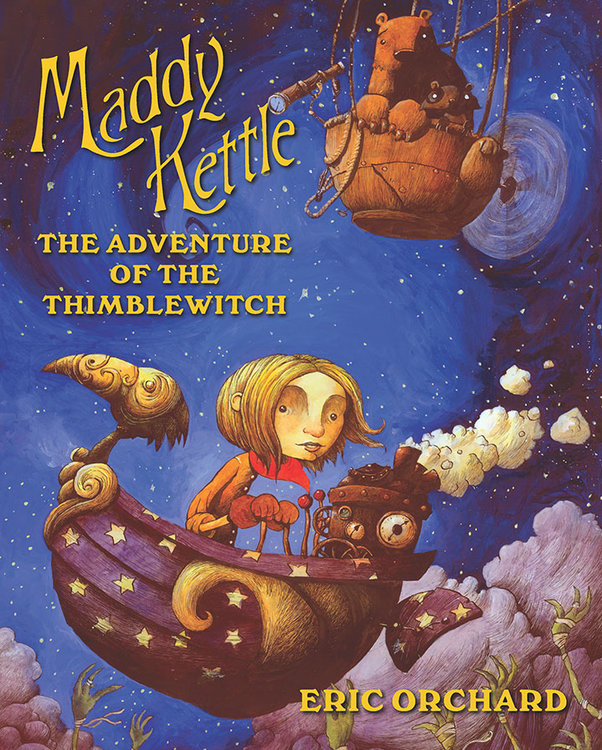 Maddy Kettle: The Adventure of the Thimblewitch by Eric Orchard
Maddy Kettle: The Adventure of the Thimblewitch by Eric Orchard
Kid’s Rating – 4 stars
Mom’s Rating – 3.5 stars
This is a beautiful book. So beautiful that my kids refused to read it for the first few months because the strange creatures and eerie setting were “scary.” I was enchanted and eventually just started reading it myself, and, like cats, my children wound up on my lap reading along. They loved it.
But a few pages in, I found myself frustrated with the storytelling. The plot moves too fast and there isn’t a lot of character-building. My kids didn’t care. The images and ideas were perfectly-paced for them. I can see how this book has captured their imaginations, even if I felt it could have been written better. A surprise little-kid hit.
Kid’s Rating – 5 stars
Mom’s Rating – 3 stars
Strip-style comics about a group of friends doing pretty ordinary things. These are funny, I guess – funnier to the kids than me. I found the comic a bit mean. The characters are all sort of jerks to each other. My kids don’t care. They think these are hilarious. The friends never seem to really hold any grudges and they do all kinds of interesting things together… so I guess I should chill out about their jerkiness. Maybe that’s just “real.” Anyway, I’m torn on this one. The kids love it but the interactions leave a bad taste in my mouth.
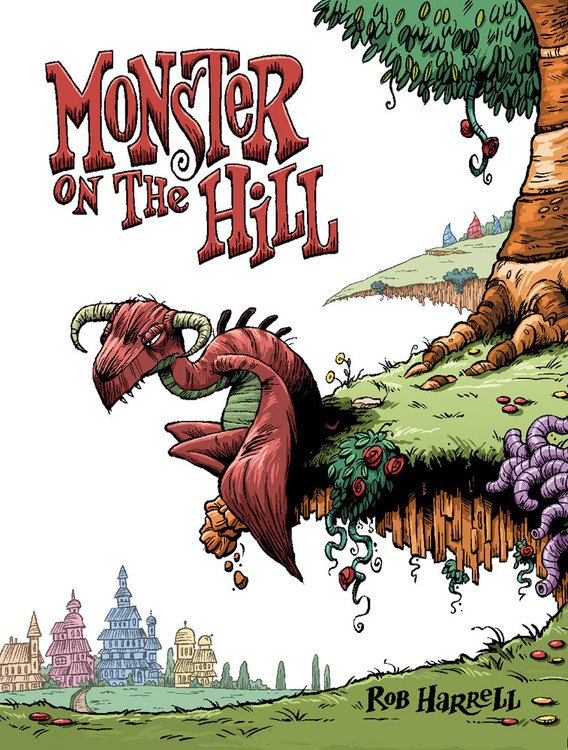 Monster on the Hill by Rob Harrell
Monster on the Hill by Rob Harrell
Kid’s Rating – 5 stars
Mom’s Rating – 4.5 stars
This was an unexpected hit. This is the story of a “lame” monster who lacks the self confidence to monster properly. The town he is meant to be terrorizing is pretty disappointed in him and send up a doctor to “fix” him. Adventures ensue.
Author Rob Harrell is probably better known for having inherited the abjectly terrible daily syndicated strip, Adam @ Home, which immediately put me at my guard. But the art in Monster is so lush and the world so fantastically fun that my reservations were swept away. The humour is occasionally pretty lame in a way that was over the kids’ head, but it didn’t distract too badly. My only major complaint is the total lack of any female characters at all. The kids have no complaints and have read this thing into the ground.
Kid’s Rating – 4 stars
Mom’s Rating – 3 stars
Gon is a wordless comic (like Andy Runton’s popular Owly) about a baby dinosaur in our own world, living in various biomes and befriending and/or terrorizing the animals there. My elder child, obsessed with nature and animals, loves these to pieces. They are gorgeously-drawn and expressive, featuring lots of really interesting real-life animals we never see.
On the other hand, I find wordless comics – even Owly – exhausting to “read” to the kids. These are dramatic performances, not readings. I look forward to my kids being willing to sit alone with these, rather than wanting my involvement.
 My Little Pony by various committees
My Little Pony by various committees
Kid’s Rating – 4+ stars
Mom’s Rating – 3-4 stars
Okay, not exactly high literature, here. But it would be misleading for me to suggest my kids are reading all these great books without owning up to the fact that we have read 10+ volumes of pony comics to pieces over the last two years. They love them. They can’t get enough of them. They rush to the pony shelf first thing when we get to the comic shop. Le sigh.
But, okay, as far as mainstream brands go, MLP is really not bad. The “mane six” ponies are well-developed, strong, interesting characters with relatable strengths and weaknesses. They go on incredibly epic adventures of every conceivable kind. The comics give more nods to adult readers than the cartoons do – they are probably written for the adult fan base, not younger kids. Lots of visual geek gags including some incredibly meta Discord/Q (from Star Trek) jokes. MLP’s major weakness is a big racial blind spot (yah yah, the ponies are a rainbow of colours. But they are also all white. Zecora the Magic Negro Pony is a zebra and there are indigenous bison. The clear implication is that ponies are white, white, white.) Later seasons of the cartoon have tried to de-white the state of ponyness, but it’s still pretty lame.
But wait, there’s more! A lot more. If you’ve fallen out of touch with comics and think Marvel/DC is all there is to offer, I really recommend you get yourself to a comic book shop – any comic book shop – with haste. I’ve barely scratched the surface of what we have on my kids’ bedstand here, let alone what is available in stores. Some of the most imaginative work in any genre is being done in this medium, in my humble opinion. It’s worth catching up.
April 15, 2014
Five Great Heroes for Small Girls
Navigating media with a young girl can be a disheartening experience. If you think representation matters, like I do, you’re constantly on the lookout for smart, confident, diverse girls represented in interesting ways. They can be hard to find, but not impossible. Six years in, I have built a small but sturdy library.
Pippi Longstocking
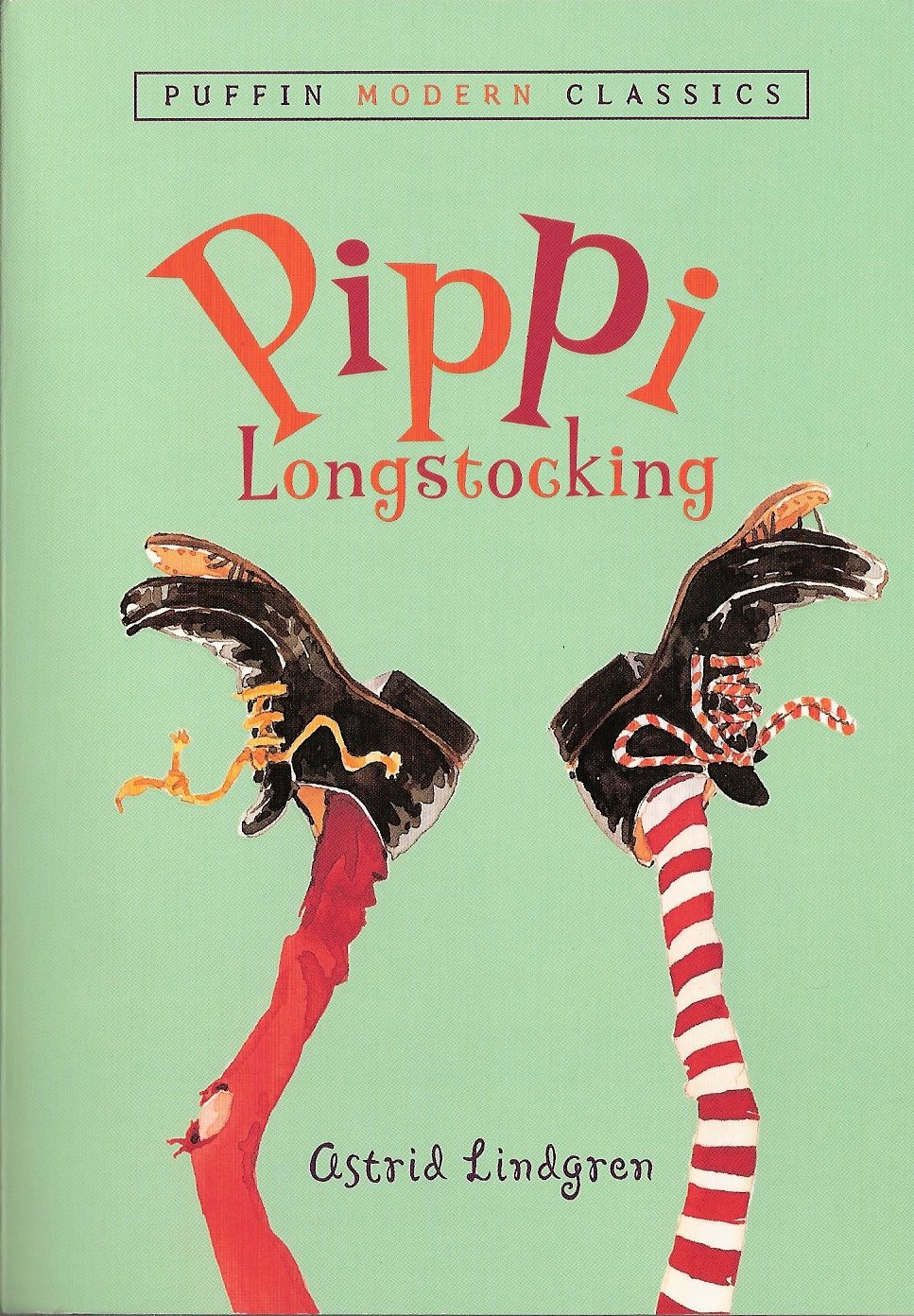 Pippi Longstocking, the hero of Astrid Lindgren’s eponymous books, was my #1 most favourite female hero for kids before I actually had kids. There were very few characters I, personally, identified with more when I was eight. Pippi lives alone with a horse and a monkey. She has incredible super-strength, which is neat, but not nearly as enticing as her independence. She has a father somewhere, distantly, who is a buccaneer captain. Pippi isn’t bothered by her father’s absence since he is alive and merely busy having adventures, so Pippi’s feral independence isn’t darkened in any way by loss or grief. She just straight up gets to do anything she likes, and does.
Pippi Longstocking, the hero of Astrid Lindgren’s eponymous books, was my #1 most favourite female hero for kids before I actually had kids. There were very few characters I, personally, identified with more when I was eight. Pippi lives alone with a horse and a monkey. She has incredible super-strength, which is neat, but not nearly as enticing as her independence. She has a father somewhere, distantly, who is a buccaneer captain. Pippi isn’t bothered by her father’s absence since he is alive and merely busy having adventures, so Pippi’s feral independence isn’t darkened in any way by loss or grief. She just straight up gets to do anything she likes, and does.
Mosca Mye
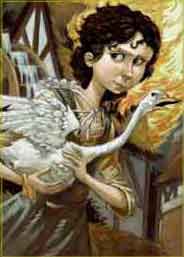 Mosca Mye is the hero of Frances Hardinge’s incredible books, Fly By Night and Twilight Robbery. Another lone, independent 12-year-old, Mosca does have a darker past, and it adds a definite edge to her character. Razor-sharp, Mosca escapes her dull relatives after sort-of-accidentally-on-purpose burning her uncle’s barn to the ground and freeing the loquacious conman, Eponymous Clent, who comes to be her partner in crime. She also has a goose named Saracen, who is the fiercest creature in all the world. Mosca’s not old enough to have lost a childlike innocence, despite her street smarts, and she survives all sorts of dangerous encounters on wit alone. Bonus points for major themes of literacy!
Mosca Mye is the hero of Frances Hardinge’s incredible books, Fly By Night and Twilight Robbery. Another lone, independent 12-year-old, Mosca does have a darker past, and it adds a definite edge to her character. Razor-sharp, Mosca escapes her dull relatives after sort-of-accidentally-on-purpose burning her uncle’s barn to the ground and freeing the loquacious conman, Eponymous Clent, who comes to be her partner in crime. She also has a goose named Saracen, who is the fiercest creature in all the world. Mosca’s not old enough to have lost a childlike innocence, despite her street smarts, and she survives all sorts of dangerous encounters on wit alone. Bonus points for major themes of literacy!
Zahrah the Windseeker
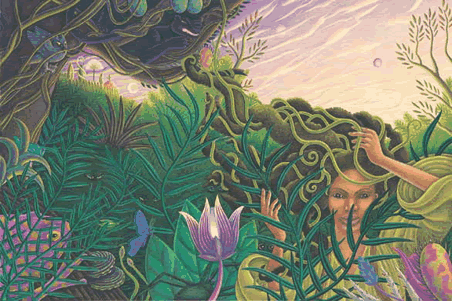 I’m partial to bold, independent heroes, but my elder daughter is a different creature. Adventures are scary to her, even when they come out well in the end, and so she instantly attached herself to Nnedi Okorafor-Mbachu’s Zahrah the Windseeker (winner of the 2008 Wole Soyinka Prize for Literature in Africa). Zahrah’s a shy, contemplative 13-year-old who is absolutely reluctant to go charging off into danger. She needs to think, internalize and understand – and occasionally be given a final firm shove. But she has strength of character and wisdom beyond her years, not to mention SHE CAN FLY, which is obviously amazing.
I’m partial to bold, independent heroes, but my elder daughter is a different creature. Adventures are scary to her, even when they come out well in the end, and so she instantly attached herself to Nnedi Okorafor-Mbachu’s Zahrah the Windseeker (winner of the 2008 Wole Soyinka Prize for Literature in Africa). Zahrah’s a shy, contemplative 13-year-old who is absolutely reluctant to go charging off into danger. She needs to think, internalize and understand – and occasionally be given a final firm shove. But she has strength of character and wisdom beyond her years, not to mention SHE CAN FLY, which is obviously amazing.
Kiki
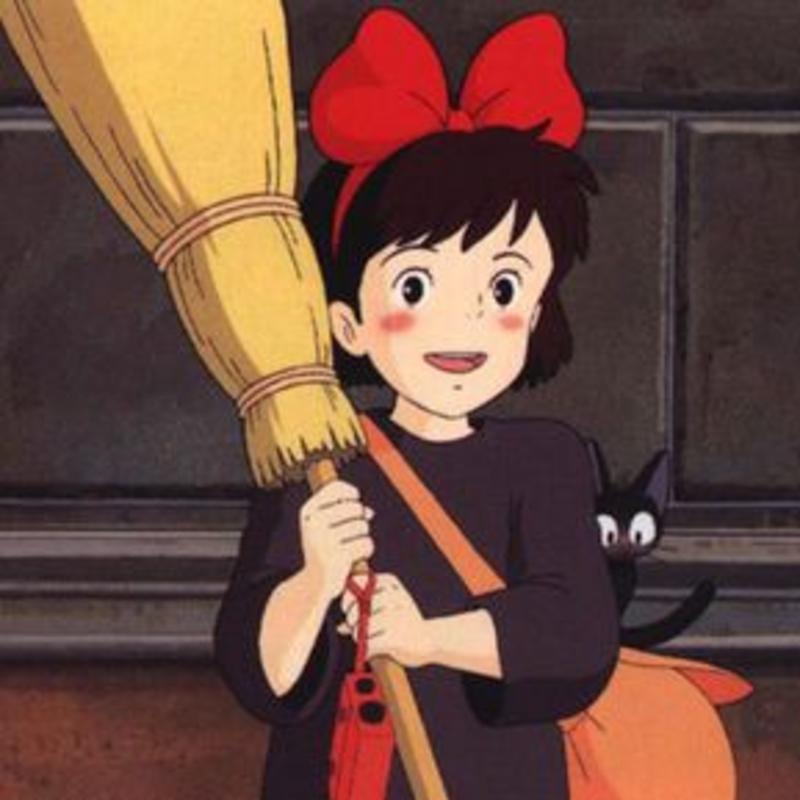 It would be easy to make this a list of characters from Hayao Miyazaki’s Studio Ghibli films, but let’s stick to one. Kiki is probably the strongest of Miyazaki’s characters. The film is about her and her growth as a character, and very little else. But it’s enough. Kiki’s independent, but less sure than some of the more assertive characters. She’s a witch, but she doesn’t know what her special skill is yet, and she quickly learns she isn’t as rich or fancy as other girls in the big city she has chosen to live in. Her fears and struggles are terrible relatable, though Kiki never sacrifices her fundamental goodness. Though she’s almost a young woman, the film’s lack of a “bad guy” makes it wonderful for kids of any age.
It would be easy to make this a list of characters from Hayao Miyazaki’s Studio Ghibli films, but let’s stick to one. Kiki is probably the strongest of Miyazaki’s characters. The film is about her and her growth as a character, and very little else. But it’s enough. Kiki’s independent, but less sure than some of the more assertive characters. She’s a witch, but she doesn’t know what her special skill is yet, and she quickly learns she isn’t as rich or fancy as other girls in the big city she has chosen to live in. Her fears and struggles are terrible relatable, though Kiki never sacrifices her fundamental goodness. Though she’s almost a young woman, the film’s lack of a “bad guy” makes it wonderful for kids of any age.
Zita the Space Girl
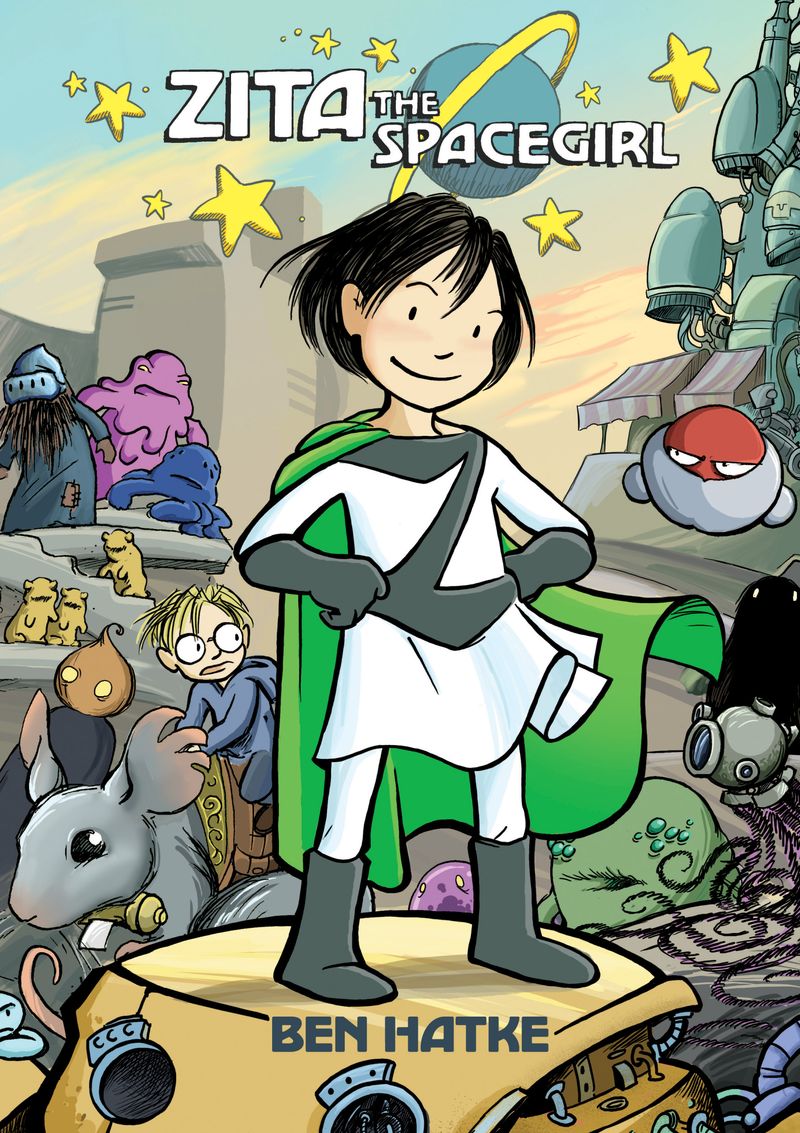 Ben Hatke’s Zita the Spacegirl (along with the sequels Legends of Zita the Spacegirl and The Return of Zita the Spacegirl) has pretty much everything you can ask for in space opera, pared down to the innocent scale of a young girl. Zita has arrived on a strange planet via a portal triggered by her best friend. He’s abducted: she dives through to rescue him. Instantly she’s thrown into huge, galaxy-spanning plots, con artistry, large scale rescue missions, desert crossings, overthrowing governments, salvaging robots, riding giant mice, standing up for economic refugees – have I missed anything? Probably – Zita almost has too much going on, but this never bothered my kids. Zita’s powers are pluck and the moral high ground – and it works.
Ben Hatke’s Zita the Spacegirl (along with the sequels Legends of Zita the Spacegirl and The Return of Zita the Spacegirl) has pretty much everything you can ask for in space opera, pared down to the innocent scale of a young girl. Zita has arrived on a strange planet via a portal triggered by her best friend. He’s abducted: she dives through to rescue him. Instantly she’s thrown into huge, galaxy-spanning plots, con artistry, large scale rescue missions, desert crossings, overthrowing governments, salvaging robots, riding giant mice, standing up for economic refugees – have I missed anything? Probably – Zita almost has too much going on, but this never bothered my kids. Zita’s powers are pluck and the moral high ground – and it works.
*
I’ve had a thing or two to say about good representations for young girls before, and my essay “The Princess Problem” is now available as part of Jim C. Hines’ Invisible: Personal Essays on Representation in SF/F. Proceeds from the sale of the book will be donated to Con or Bust, a fund administered through the Carl Brandon Society that helps get people of color/non-white people to attend SFF conventions. Take a look! Excellent work within.


